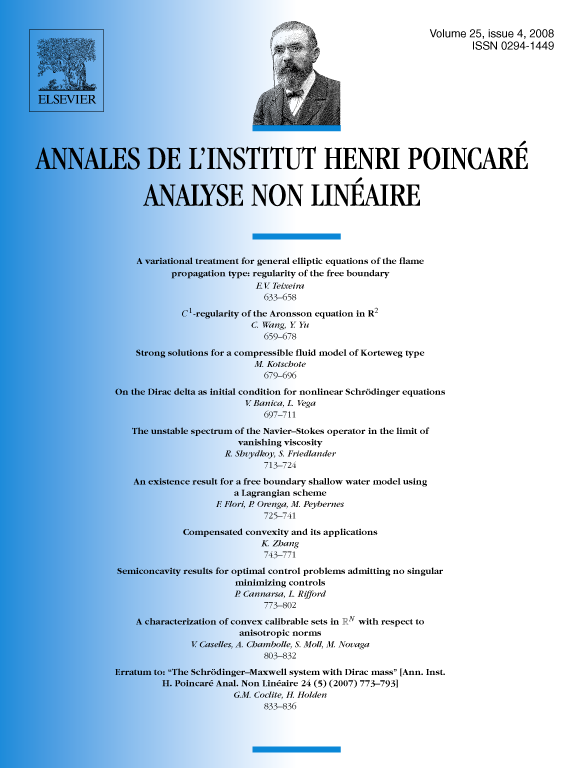A variational treatment for general elliptic equations of the flame propagation type: regularity of the free boundary
Eduardo V. Teixeira
Rutgers University, Department of Mathematics, Hill Center, Busch Campus, 110 Frelinghuysen Road, Piscataway, NJ 08854-8019, USA; Departamento de Matemática, Universidade Federal do Ceará, 60455-760 Fortaleza, CE, Brasil

Abstract
We develop a variational theory to study the free boundary regularity problem for elliptic operators: in , on . We use a singular perturbation framework to approximate this free boundary problem by regularizing ones of the form: , where is a suitable approximation of Dirac delta function . A useful variational characterization to solutions of the above approximating problem is established and used to obtain important geometric properties that enable regularity of the free boundary. This theory has been developed in connection to a very recent line of research as an effort to study existence and regularity theory for free boundary problems with gradient dependence upon the penalization.
Résumé
Nous développons une théorie variationnelle pour l'étude du problème de la régularité de la frontière libre pour des opérateurs elliptiques : en , en . Nous régularisons et approximons la frontière libre par une méthode de perturbation singulière de la forme : , où est une approximation adaptée de la fonction delta de Dirac . Une caractérisation variationnelle des solutions du problème d'approximation ci-dessus est établie et employée pour obtenir les propriétés géométriques importantes qui impliquent la régularité de la frontière libre. Cette théorie a été développée en connection avec une ligne très récente de recherche comme effort pour étudier la théorie d'existence et de régularité pour des problèmes de la frontière libre avec la dépendance de gradient sur la pénalisation.
Cite this article
Eduardo V. Teixeira, A variational treatment for general elliptic equations of the flame propagation type: regularity of the free boundary. Ann. Inst. H. Poincaré Anal. Non Linéaire 25 (2008), no. 4, pp. 633–658
DOI 10.1016/J.ANIHPC.2007.02.006